A Comprehensive Guide To Vegan, Dairy Free Milk
This post may contain affiliate links. Please read our disclosure policy.
This post contains a guide to homemade vegan & dairy-free milk recipes- This includes why you should make homemade dairy-free milk and a round-up of all my favourite recipes for you to try
Recently I’ve been religiously pulling together all of my dairy-free milk recipes, to post on the blog, from coconut milk to almond and soy and even rice. I have a recipe for a whole variety of plant-based and vegan milk options – So much so that you’ll never need to buy some from a store again.
This dairy-free milk guide goes into why you should try making homemade dairy-free milk, what options you have and the basic how-to premise. It also contains a list of recipe options including nut milks, seed milk, and a variety of other plant-based milk recipes.
Whether you’re lactose-free, or don’t drink cows milk for any other dietary or ethical reasons, then hopefully this list contains some new favourite options for you because who doesn’t want to have deliciously rich and creamy milk in their fridge.
Why Make Homemade dairy-free Milk?
It goes without saying that picking up a carton of milk in a store couldn’t be much easier, so some people might wonder why you’d want to make these at home in the first place. Well, here are a few reasons why I love to encourage people experimenting with these recipes and stepping away from store-bought options.
Store-bought milks are usually filled with unnecessary preservatives, additives and gums/thickeners etc. Not to mention sweeteners/sugars. Even buying dairy-free milk with a reasonably clean ingredients list has a downside in that it usually comes with a hefty price tag.
Not to mention that the actual % of nut/oat/rice etc. to water can be ridiculously low in certain store-bought varieties. Which is probably why the gums and thickeners are used – to trick you into thinking you’re getting a better product than you are.
- If you make your dairy-free milk though, you’ll find that two ingredients are all you’ll ever need to make the base milk. If you want it to be creamier/thicker – add more of your base ingredient, if you prefer it thinner/subtle – then add more water.
- Homemade milk is usually SO MUCH more cost-effective because the ingredients can be bought in bulk and for a base milk recipe, is just your ingredient plus water. Even adding some sweetener/add-ins homemade plant-based milk still works out much cheaper.
- It’s possible to fortify your milk too. Either with collagen powder and, if you consume meat products, then bone broth for additional nutrition. However, if you do decide to do this, then you’ll need warm water to dissolve the add-ins before blending with the rice.
- You can also be 100% in control of any add-in or sweetener you want to add to your homemade dairy-free milk too. I like to keep my milk recipes free from any refined sugars and so Medjool dates, monk fruit sweetener or maple syrup are personal favourites.
- The same can be said for flavouring your milk. This will cost a fraction of the price of buying pre-flavoured store-bought milk. Also, you can continue to be in charge of exactly what you add to the recipe. I love to add homemade vanilla extract into nearly all of my milk.
However, you’ll also notice that I have a section in the recipe posts below, outlining recipe variations and possible flavour add-ins you can use to jazz up the milk.
How to Use The Different Kinds of milk
I think this ultimately comes down to preferred taste and texture. While there are certainly some dairy-free milk options that fare better for specific uses (such as soy and oat milk in coffee/hot drinks), I’ve found that people will use whichever mill they prefer for particular needs.
All of the various dairy-free milk recipes tend to work well when combined into smoothies. However, you may prefer one over the other for cooking vs drinking straight. It’s worth noting that if you want milk with high protein content, similar to cows milk, then soy milk is probably your best bet. Otherwise, all the dairy-free milk recipes contain different nutritional values and health benefits, so it’s up to you to see what you’d prefer.
One of the most popular categories of dairy-free milk is probably ‘nut milk’.
Homemade nut milks are a simple combination of nuts, water and any optional flavour/sweetening add-ins. I know it can seem daunting if you don’t know how to make nut milk – but the process is surprisingly simple and almost identical in most cases.
The process of making nut milk
- Soak your Nut overnight. Then make sure to rinse them well.
- Place into a blender with water and blend till creamy and smooth
- Strain through some cheese cloth or a nut milk bag
- Pour into a bottle and voila, there’s your milk.
You can then use the leftover nut pulp in a variety of ways that I’ve outlined in the individual recipe posts.
In fact, I use my NutraMilk Machine for all of these recipes, which makes the process even simpler. With a NutraMilk, there’s no straining process needed at all, as the machine does that all for you. It’s a small step, but I honestly haven’t looked back since beginning to use it, and it’s now pretty much a daily-used kitchen appliance.
You also don’t necessarily have to pre-soak your nuts when using the NutraMilk – resulting in less mess and leftover ‘pulp’ / waste as it strains the nuts to the point where it’s practically only skins left in the machine – to get as much of the nutrients as possible in your milk. Read below to find out why and the benefits of using soaked vs raw nuts for your nut milk recipes. Also, if after reading all of this, you’d like to pick yourself up a NutraMilk then feel free to use discount affiliate code ALPHAFOODIE50 at the checkout for a £50/$50 discount)
While the method varies slightly for some of the other dairy-free milk recipes, such as soy milk and flaxseed milk. In general, making homemade plant-based milk is simple, doesn’t take a lot of time or hands-on effort, and well worth avoiding the cost and ‘additives’ from store-bought milk.
Soaked Vs Raw Nuts for homemade nut milk
You’ll notice that there are a lot of nut milk options within this list, that include soaking he nuts pre-blending. This is something I do, for a variety of reasons. However, it’s also worth noting that you can make nut milk with no soaking required and is a method I’ll regularly use when I’m low on time or feeling particularly lazy.
So I thought I’d include a little section here on using soaked vs un-soaked nuts. And the perfect lazy kitchen hack to smooth nut milk with no pre-soaking or straining required and virtually no waste. That means there’s very little clean up required and no need to think about how to use your leftover nut pulp.
Using Soaked Nuts:
As delicious as nuts are, they also contain a couple of compounds which can make them hard to digest and cause digestive issues/upset. Particularly for those that already have digestive issues including IBS etc.
- For example, nuts have phytic acid, much like main grains/legumes. Phytic acid is an anti-nutrient that binds to minerals ( iron, zinc, and calcium), stopping them from being properly absorbed by the body. Soaking the nuts starts breaking down the acid though, so they can be properly absorbed.
- Nuts also contain various enzyme inhibitors, which can make them hard to digest. However, soaking the nuts can neutralize the enzymes.
- Overall, soaking is said to increase the bioavailability of important nutrients.
plus pre-soaked nuts are easier to blend, resulting in creamy nut milk and can result in less leftover pulp.
Using Raw Nuts:
After reading the above, you’re probably wondering why you’d ever decide to not soak the nuts. But there are some things worth noting.
For example, phytic acid is only really negative for our bodies when we’re eating too much of it; Because phytic acid is found in many grains and legumes, we can consume a lot more then we realise and, if we don’t pair them with other foods that are nutrient-dense, then that is when we may run into a problem.
Some research actually shows that phytic acid has positive effects on our bodies, including removing toxic metals from our system, anti-cancerous properties, kidney stone prevention, blood sugar level control and reducing the digestion of fats that can form cholesterol. I’ve also read that phytic acid can have a positive effect on bone density and that it works as a secondary messenger in cells.
It’s also worth noting that phytic acid is largely contained in the skins of the nuts. With the Nutramilk machine, in particular, their straining system works well to actually strain the milk so the skins are left behind in the machine without a lot of leftover pulp – so you’re getting as much of the nutrients as you can.
Basically, as long as you’re eating a balanced diet, then phytic acid content isn’t something you need to overly concern yourself about unless you find that you personally have issues digesting nuts. I tend to soak my nuts out of habit now, but will happily swap between soaked and unsoaked sporadically.
Also, when using raw nuts it’s easier to adjust the ratio of your nut milk recipes if you find that you want it creamier after an initial blend and depending on the nutritional density that you want.
So what if you want to make nut milk with no soaking required?
One of my absolute favourite lazy kitchen hacks is making nut milk using nut butter. This requires no pre-soaking, so straining, no mess!
Plus, I like to lightly toast my nuts before blending them for nut butter, which adds a wonderful flavour dimension to homemade nut milk. I actually have a complete guide to nut & seed butters , here on my blog. Each recipe tells you the optimal time for blending the nut butter.
With the Nutramilk, soaking your nuts isn’t necessary. In fact, you can use a quick method of blending your nuts to butter before adding the water and you’ll end up with nut milk that is virtually mess-free and waste-free (no leftover pulp!).
What about my Favourite Dairy-free milk recipes?
Obviously, I’ve made these all, so there isn’t one that I really dislike in any way. However, I have some favourites. Homemade almond milk has become a staple in my apartment over the last few years. However, as I got more into making other vegan milk variations, I realised that it’s no the most eco-friendly option.
With that being said, I like to swap out what milk I have in my fridge week to week – from hemp milk, cashew milk, rice milk etc.
The more luxurious dairy-free milk recipes, I usually keep for a treat. This includes pistachio milk and cashew milk. However, I love to keep some lighter milk on-hand at all times, such as rice milk and a couple of nut milks.
Oat milk is also an absolute staple in my apartment for it’s thick, creamy texture. And, once I figured out a foolproof method to non-slimy oat milk, I’ve never looked back.
This post was sponsored by NutraMilk and contains affiliate links which means, at no additional cost to yourself, I may earn a commission- to help purchase ingredients for my next recipe- if you purchase an item having clicked a link on this page.
The Round-Up Of Vegan & Dairy-Free Milk Recipes

How To Make Oat Milk
View Recipe
The best flax milk
View Recipe
How-to: DIY Homemade Coconut Milk
View Recipe
How to Make Walnut Milk
View Recipe
Simple Homemade Hemp Milk
View Recipe
Homemade Rice Milk (2 Ingredient)
View Recipe
How to Make Cashew Milk (Zero-Waste | + Bonus Flavors)
View Recipe
Soy milk
View Recipe
How to Make Hazelnut Milk
View Recipe
Pistachio nut milk
View Recipe
How to Make Almond Milk at Home
View Recipe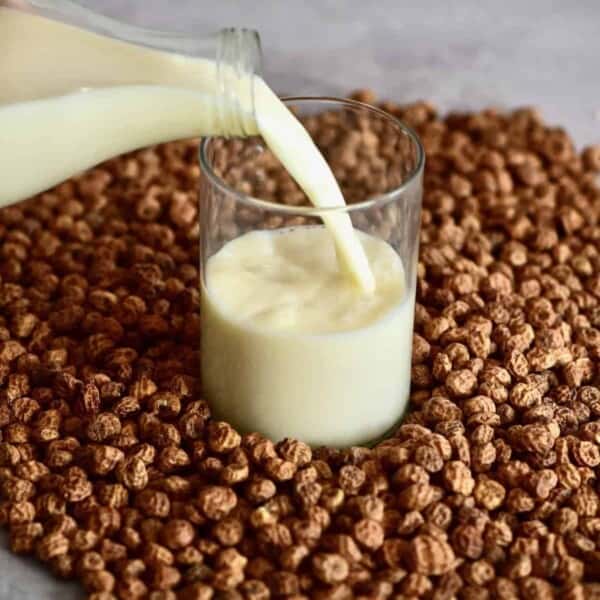
Homemade Tiger Nut milk (Horchata De Chufa)
View RecipeIf you have any questions, feel free to ask them in the comments. Also, remember that I love seeing your recipe recreations so feel free to tag me @Alphafoodie.









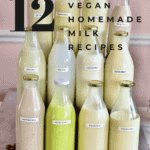

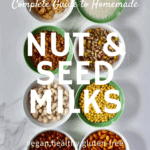



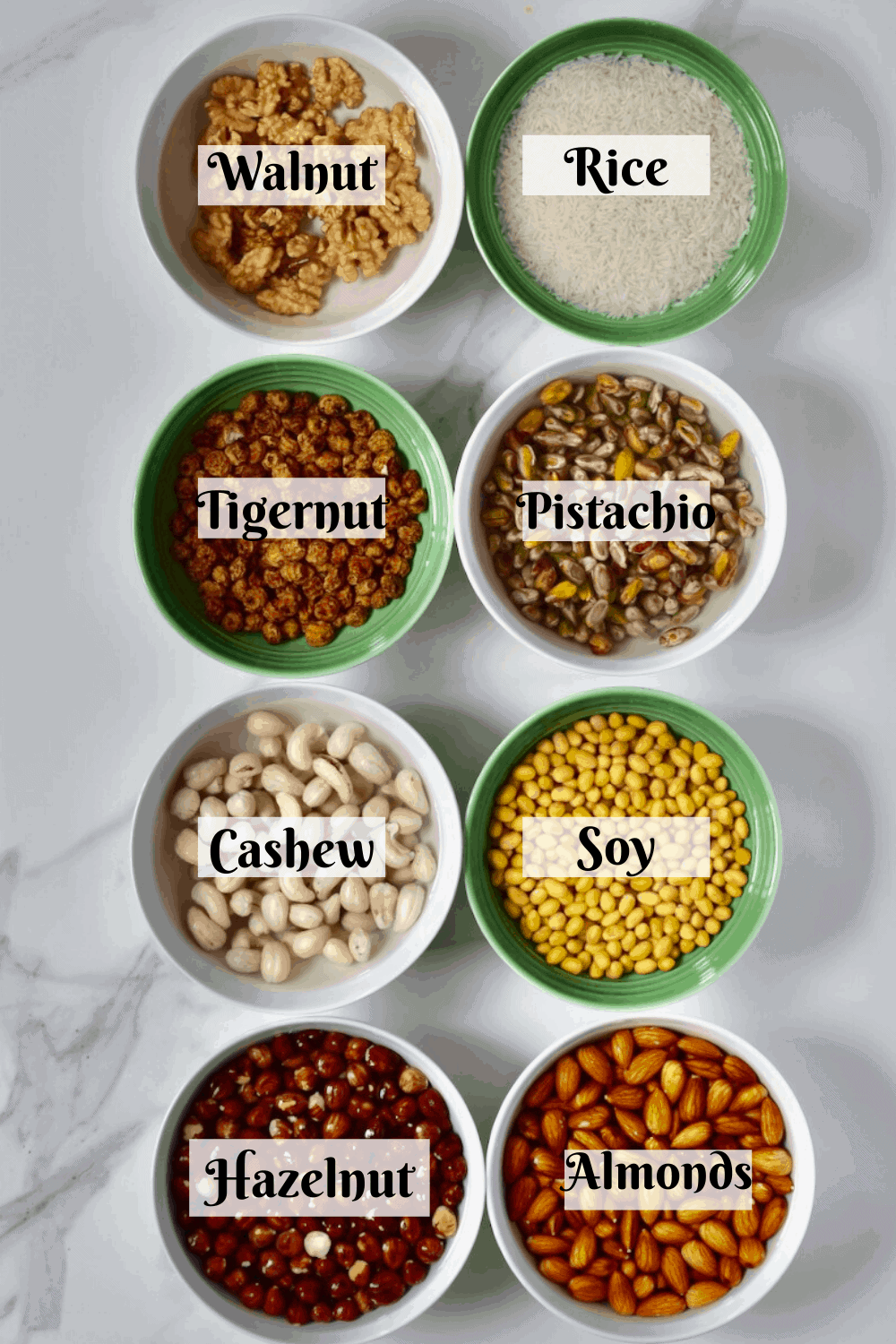

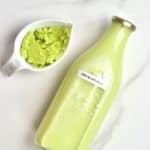





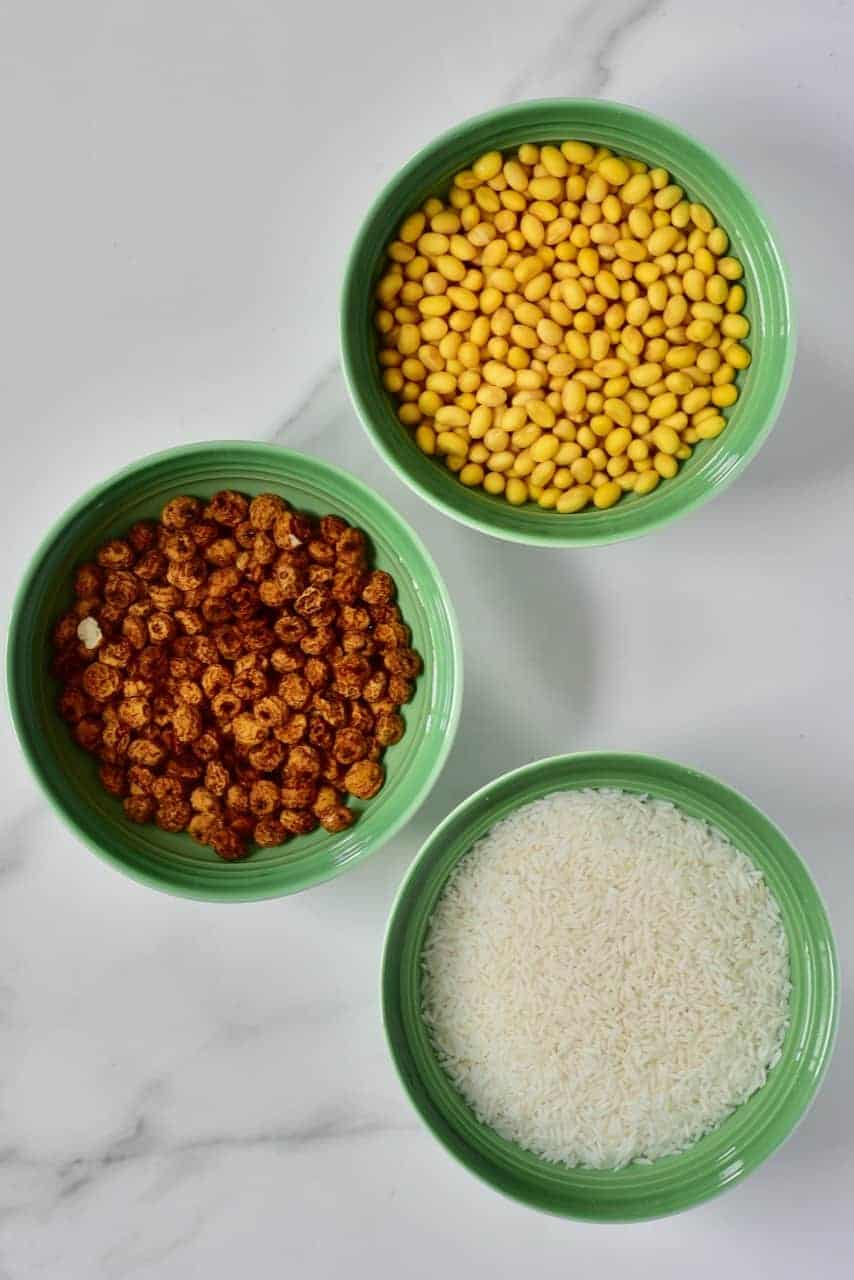








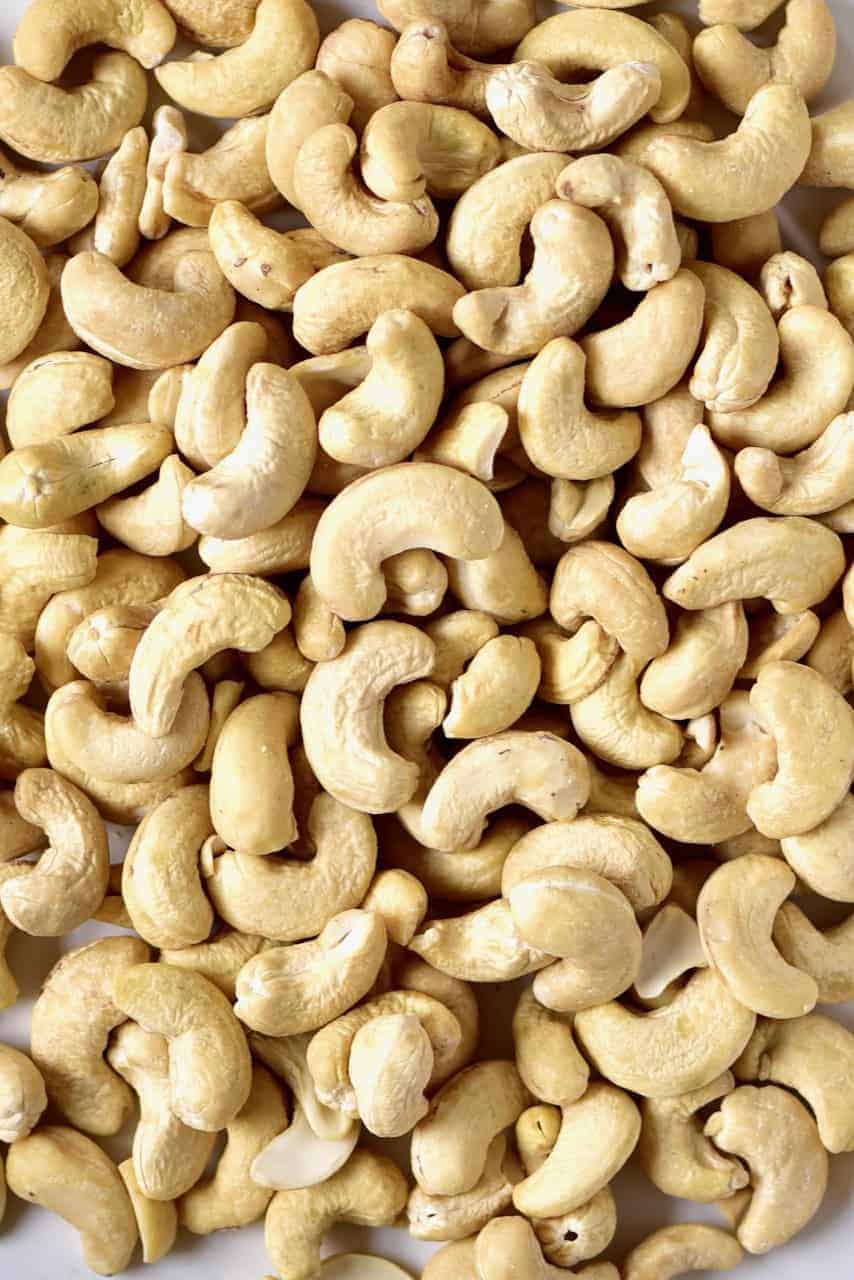















Hello Samira, I would like to buy the nutramilk processor but how come it strain the milk itself. I do not understand where the water goes ? I sent an email to the company to understand it. Thanks a lot for the help.
Hi Aïda,
When you strain the milk, the whole liquid goes out through the tap on the machine and into a bottle or a large bowl that you have to place under the tap. I hope this helps.
Hi, do you know if you can make milks with seeds instead of nuts? In particular, camellia seeds?
Hi Michelle,
Yes, you can use seeds to make plant-based milk – I have here on the blog the recipe for flaxseed milk, rice milk, hemp milk. I haven’t yet tried camellia seeds but you should be able to use them as well.
And coconut free too
I’m really excited when reading this, because there’s no choice of nutmilk in my country. So, I decided to make my own nutmilk and distribute it. What kind of nut that you used? Is it raw or you boiled it first? Is it any differences?
Hello Agnes,
You can use whichever nuts you want – soak them, then blend them with water. All the details are outlined in this blog post and there are even more tips in the different blog posts for the individual nut milks (hazelnut milk, cashew milk, coconut milk, etc). I hope this helps.
What “milk” would you recommend to be good in hot drinks and cooking that is soy and nut free?
Hi,
Oat milk works great both for hot drinks and for cooking. Oat milk has quite a thick texture and a creamy mouthfeel so it works in many recipes.
Hi, wonderful job at breaking down the many ways to make dairy free milks. I for one, have experimented with so many. I’m very interested in the bottles you use to store them. Can we have a link for them.
Thanks
Thank you so much for your comment, Jessi.
I got the bottles online but can’t seem to find the link now. Sorry 🙂